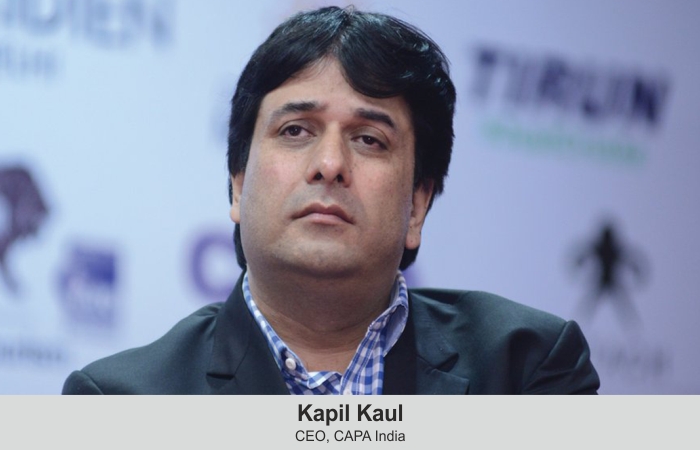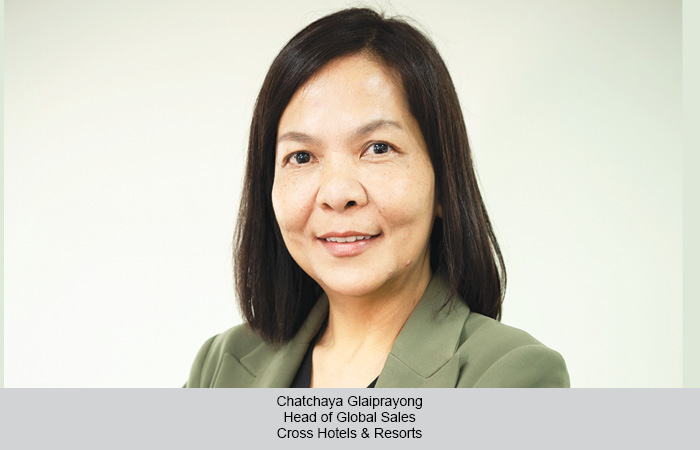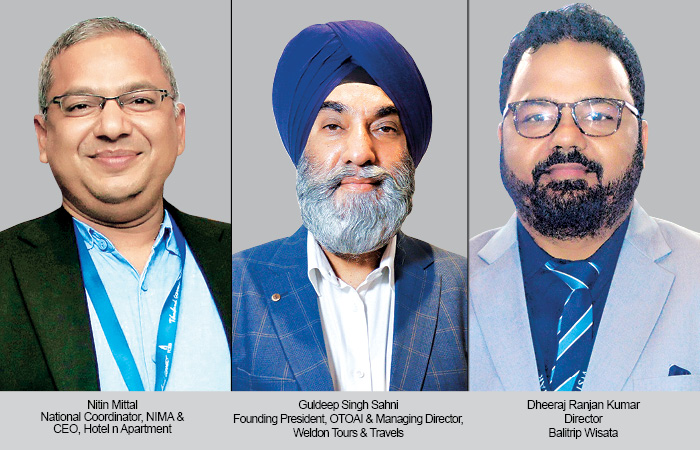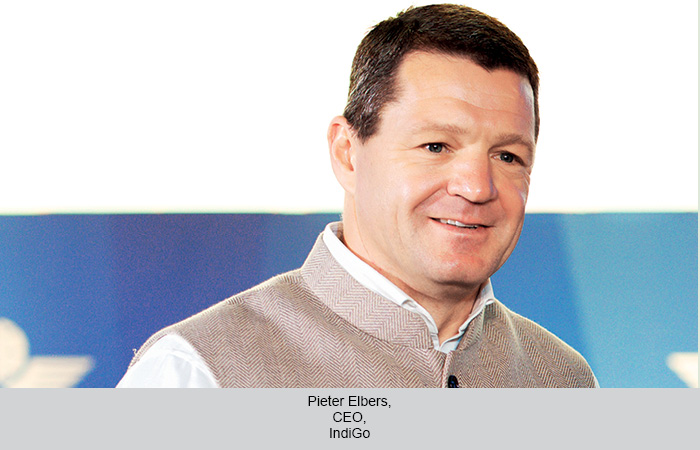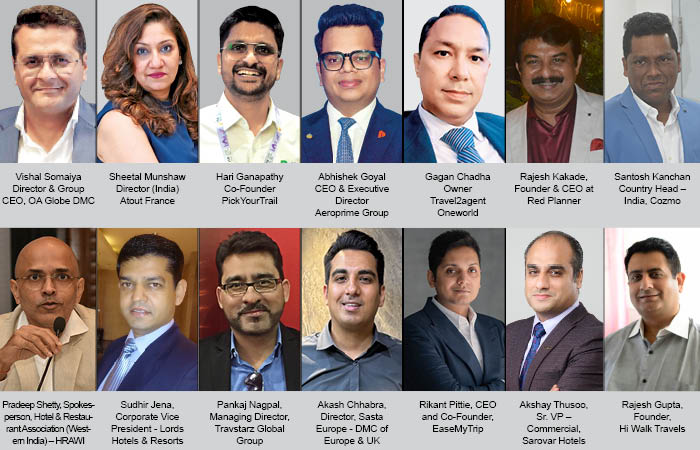Kapil Kaul, CEO, CAPA India, presents a strategic way forward for the revival of India inbound, outbound and domestic tourism. To drive his point home, he recommends structural changes to the tourism apparatus, including establishment of a tourism council on the lines of GST Council.
Nisha Verma
Kapil Kaul suggests that the Indian travel and aviation industry can utilise the crisis for undertaking structural changes and not play tactical. CAPA India, through its webinar, has made some recommendations in this regard as to why the tourism industry should have strategic and long-term changes rather than press for tactical changes. “The idea behind the webinar is to push for strategic change, making sure that businesses are reinvented,” Kaul said.
He also pointed out that they have included outbound travel in their analysis, because without a large outbound, airlines would not be able to invest in the kind of connectivity that has been witnessed in the last 30-40 years. “Outbound is a critical enabler to ensure that air connectivity, both domestic and international, continues to grow. Stronger the outbound market, stronger would be the Indian as well as international carriers,” he commented.
Here are some key highlights and comments from the analysis:
Contribution of tourism
The economic contribution of travel and tourism is much higher than other industries and segments of the economy. The investment, mostly through private capital be it for airports, hotels or tourism infrastructure, is roughly about $25 million and is not fully recognised when we talk about infrastructure spend. “Tourism promotes soft power and if done well, it can connect our new generations to our glorious traditions and history,” Kaul said.
Reality check: There’s no bailout
It became apparent around March-April that the government is unlikely to use taxpayers’ money to bailout rich promoters with poor business, Kaul pointed out. “This message has been very clear. The government can create an enabling environment and liquidity measures to make sure that the industry has access to capital, and people can go to banks and institutions to raise money, but no bailout will be there. According to me, this is the biggest structural reform which resets expectations for the future. It is imperative to bring your own house in order,” he said.
What are we reviving?
Kaul suggested that the industry know what its energies need to be focused on. “Our view is that focusing on the tactical is meaningless. Companies with solvency risk, which are under-capitalised, poorly managed, whether in travel or aviation, can’t be saved. Moratoriums and loans are possible, but saving most of the industry, which may be plagued with inefficiencies, unproductivity and wrong business models, is a meaningless exercise.”
He shared that instead, CAPA India is focusing on strategic revival and development of a long-term framework, which will have strong fundamentals that will serve well in the future. “At CAPA, we believe that instead of businesses with solvency problems, there is a need to focus on companies that have strong fundamentals and are facing liquidity challenges. While such companies can be fit, bad businesses can’t,” Kaul said.
Building institutional foundations
The key to strategic renewal is to build institutional
foundations for change. Explaining, Kaul said, “To structure institutional foundations, we need to have a 20 or 30-year projection, which is the first requirement for hotel investments, tourism infrastructure investments, airport infrastructure investments and connectivity investments. This forecast should be independent and realistic, as you need to know what you are aiming for.”
The second step, he said, is to develop a comprehensive tourism plan. “We need a planning system which is robust. The processes for creating such a masterplan need a very different structure. This plan can be updated every 4-5 years and shall include hotel infrastructure capacities across categories, airport capacity and locations, multi-modal transport infrastructure, conventions and events infrastructure, civic infrastructure, carrying capacity, as well as environmental and sustainability considerations. This plan must be institutionalised at national, state, city and district levels as ‘One India, One tourism mission’,” he recommended.
Next in line is a policy and regulatory framework. “We have a policy framework which can be released anytime. We have seen the drafts, but without a long-term projection and a national masterplan that integrates with local and city plans, a policy and regulatory framework can’t be created. After that, to enable this policy framework, we need to know what kind of fiscal incentives as well as ease-of-doing-business reforms are needed. This is because regulatory costs on hotels, travel and aviation are massive,” Kaul shared.
“In fact,” he continued, “we may have to recast Tourism Finance Corporation of India (TFCI) into it with a larger balance sheet and a different set of expertise. Also, India must have a tourism research centre which documents and digitalises this history of thousands of years, which can be made available for future generations. We must also have a plan for skill upgrade across every segment and to create these institutional changes. To build experience, investment in skill is critical.”
Leadership and governance
To achieve these objectives, leadership and governance will be essential. Kaul said, “Since tourism is going to be so dynamic going forward, we may require a specialised Tourism Administrative Service which has policymakers on the lines of IAS. Since tourism covers so many aspects, unless we have policymakers who specialise in tourism, institutional foundations can’t be fed. There is also a need for a legally empowered tourism council on the lines of GST Council, which can comprise union minister of tourism, state tourism ministers, secretaries and all other experts whose job should only be focused on policy and regulatory effectiveness, competitiveness, ease of doing business, financing, education and training.”
He also suggested that there should be a national tourism board which will have state and city tourism boards integrated into it. The role of this legally empowered tourism council should be to look at all strategic issues and inputs that are meant for implementation.
He further said that there was also a need to relook at the advocacy structure for tourism. “We have multiple associations and there is a need for streamlining the industry to create an institutional foundation. FAITH, which is a multiple body framework, has done an effective job. The government may not recognise hundreds of associations, and only one association shall work with the tourism council, MOT and state tourism ministries on strategic issues. If institutional foundations must be set up, the industry should have a very different style of working,” he asserted.
Leverage the potential
Concluding, Kaul said, “According to me, India is a unique and intellectual adventure. Cities like Delhi, Mumbai and Kolkata can be promoted as London, New York or Buenos Aires, respectively. We need to make sure that we unlock this value, which is only possible if we have institutional foundations.”
Key recommendations
- 20 or 30-year investment projection for building institutional foundations
- Comprehensive tourism plan
- Fiscal incentives and ease-of-doing-business reforms
- Recast TFCI with a different set of expertise
- Tourism research centre to digitalise history
- Specialised Tourism Administrative Service
- A legally empowered tourism council
- National tourism board with state and city tourism boards integrated into it
 TravTalk India Online Magazine
TravTalk India Online Magazine




